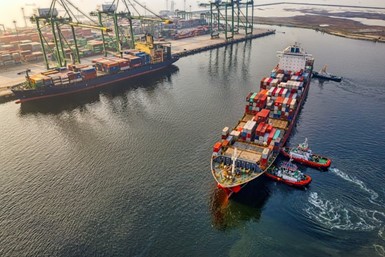
Steven Moore is a professional in the M&A Industry. In the following article, he discusses the impact of consolidation in transportation and how it shapes the competitive landscape.
Mergers and acquisitions (M&A) in the transportation industry play a significant role in shaping the competitive landscape. These strategic moves, where companies combine or acquire other firms, can have far-reaching effects on the industry, influencing market dynamics, pricing structures, and customer experiences.
A merger occurs when two companies combine to form a new entity, pooling their resources, expertise, and market share. On the other hand, an acquisition involves one company purchasing another, either as a strategic expansion or to acquire a unique set of business characteristics identified at the target company. Both mergers and acquisitions are strategic decisions aimed at achieving growth, increasing market share, or gaining competitive advantages.
Several factors drive companies in the transportation industry to pursue mergers and acquisitions. These include:
Consolidation in the transportation industry can have significant implications for market dynamics. Steven Moore explains that large mergers or acquisitions can lead to increased market concentration, resulting in fewer players controlling a larger share of the market. This consolidation may reduce competition, leading to higher prices for consumers and potentially limiting choices.
Moreover, consolidation can also reshape industry trends and standards. For example, a merger between two major airlines may influence ticket pricing strategies, route networks, and in-flight services, impacting the entire aviation industry. Similarly, a merger between two shipping companies may lead to changes in shipping routes, delivery schedules, and freight rates, affecting global trade patterns.
Moore says that while mergers and acquisitions offer opportunities for growth and expansion, they also present challenges for companies and stakeholders. Integration issues, cultural differences, and regulatory hurdles are common challenges faced during the consolidation process. Additionally, the failure to effectively integrate acquired assets or manage post-merger transitions can result in financial losses and damage to brand reputation.
However, consolidation also creates opportunities for companies to innovate, diversify their revenue streams, and enhance their competitive position. By leveraging synergies, combining resources, and accessing new markets, companies can achieve economies of scale and drive sustainable growth.

Given the potential impact of mergers and acquisitions on competition and consumer welfare, regulatory agencies closely monitor consolidation activities in the transportation industry. Antitrust laws aim to prevent monopolistic practices and ensure fair competition, requiring companies to obtain regulatory approval before completing mergers or acquisitions.
Regulatory scrutiny may focus on market concentration, pricing practices, consumer choice, and potential anticompetitive effects. Regulatory agencies may impose conditions or divestitures to address concerns related to market dominance or anti-competitive behavior.
Steven Moore explains that when looking ahead, the trend of consolidation in the transportation industry is likely to continue as companies adapt to evolving market conditions and consumer demands. Factors such as globalization, technological innovation, and changing regulatory landscapes will shape the pace and direction of consolidation activities.
Moreover, emerging trends such as the rise of e-commerce, the shift towards sustainable transportation solutions, and the development of autonomous vehicles may drive new opportunities for mergers and acquisitions in the transportation sector. Companies that can strategically navigate consolidation efforts, embrace innovation, and prioritize customer needs will be well-positioned to thrive in the evolving competitive landscape.
In closing, mergers and acquisitions have a profound impact on the competitive landscape in the transportation industry. From reshaping market dynamics to influencing pricing strategies and consumer experiences, Steven P. Moore reports that consolidation plays a pivotal role in shaping the future of transportation. By understanding the driving forces behind consolidation, recognizing the challenges and opportunities it presents, and navigating regulatory considerations, companies can harness the power of mergers and acquisitions to drive sustainable growth and competitive advantage.